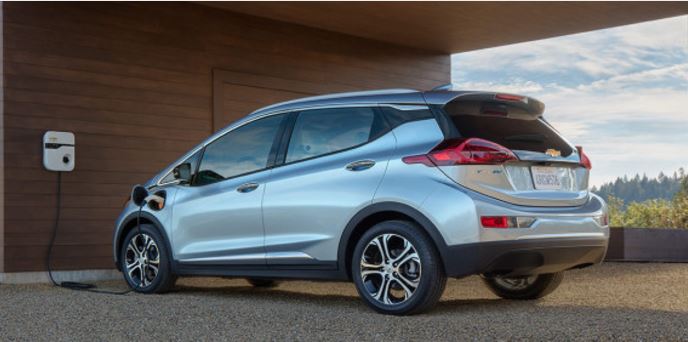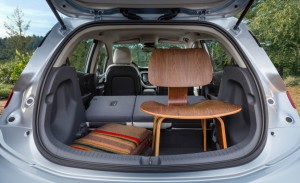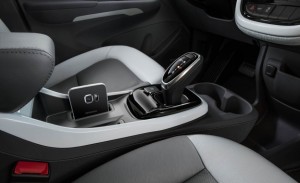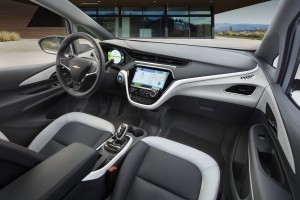News
Will the 200 mi, $30k Chevy Bolt challenge Tesla’s Model 3?
The Chevy Bolt and Tesla Model 3 will be priced nearly the same and will have about the same range. Is there room enough in the market for both or will one dominate the other in sales?
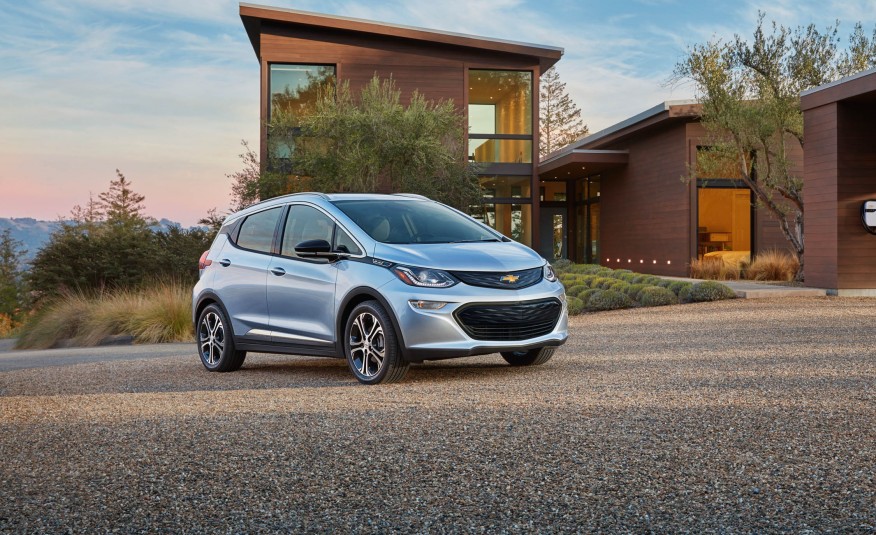
Chevrolet unveiled its production all electric Bolt at the Consumer Electronics Show (CES) this week. Promising a range of 200 miles on a single charge, and at a price point in the $30,000 range, the Chevy Bolt has many wondering how this will stack up against Tesla’s upcoming mass market Model 3, to be unveiled in March.
Price and Range
Both cars will be similarly priced. Tesla says the Model 3 will start at $35,000. Mary Barra, GM’s CEO said at CES on Wednesday the Bolt will start at $37,500 before incentives and rebates. Though she didn’t give any details about trim levels and options, we know that a fully equipped Chevy Volt costs about $8,000 more than the base model. Add the same amount to the Bolt and you have a retail price just north of $45,000.
In all likelihood, Tesla will offer a number of options on the Model 3 including a choice of battery sizes, single or dual motors, and possibly falcon wing doors as hinted by Elon Musk. It wouldn’t take much to get the price of a Model 3 above $45,000. We wouldn’t be surprised if a fully loaded Model 3 nudges the $60,000 mark.
Styling

Beauty is in the eye of the beholder, which couldn’t hold more true when it comes to the looks of the Chevy Bolt. Some have said it resembles a BMW i3 in the front and a Honda Fit in the rear. Despite the compact look of the Bolt, it’s quite roomy inside. The front seats are a monopost design similar to what Tesla uses for the second row seats in the Model X. The center console floats between the seat, leaving lots of foot room for rear seat passengers. The Bolt’s flat floor means it’s easy to slide in and out. It also has slightly more cargo room than the Honda Fit.
- Roomy Chevy Bolt storage capacity
No one knows yet what the Model 3 will look like, but Tesla has done an excellent job designing its cars so far. The Model S still looks modern even though it has been on the road for 4 years. We hear reports that Elon is pushing his engineers to get the coefficient of drag on the Model 3 below .20, which may require some extreme exterior designs. From what we know, the Model 3 will be larger than the Bolt, but is expected to be a sedan, at least initially. The Bolt is more of a crossover utility vehicle.
Connectivity and Autonomous Driving
Tesla has an enormous lead over other manufacturer thanks to its Autopilot software that shares what it knows with other Teslas via the cloud. It also has one of the user interfaces in the business. The touchscreen in the Bolt is adequate but not groundbreaking. The area where the Bolt and the Model 3 may be direct competitors is in the market for on-demand car sharing.

Ms. Barra announced the Bolt will have app based software that will make it suitable for car sharing. The corollary is that General Motors just invested a half billion dollars in Lyft. It clearly is positioning itself for the new transportation paradigm in which people don’t own cars anymore. They simple request the kind of car they need when they need it and pay the appropriate fee. Particularly for people in crowded urban areas, that model makes perfect economic sense.
But Tesla has its eye on that market as well. Who can forget Elon’s awkward moment during a recent conference call when analyst Adam Jonas asked him if Tesla was interested in pursing on-demand car sharing? Musk’s demeanor made it clear that Jonas’ question had hit a nerve. That’s where the collision between the Chevy Bolt and the Tesla Model 3 may occur, as both attempt to exploit new market opportunities.
Timing
Mary Barra confirmed Wednesday that Chevy Bolt production will begin late in 2016. That should give it about a one year head start in the market on the Tesla Model 3 — assuming Tesla keeps to its stated timeline. If it does, it will be the first time in company history. If it is delayed, it may spot the Bolt such a massive lead that it will never be able to catch up.
Elon Musk has challenged other automakers to make more and better electric cars. The Chevy Bolt is GM’s first attempt to rise to the challenge. Whether it is a Tesla killer or just a pretender won’t be known until at least a year from now.
News
Tesla UK sales see 14% year-over-year rebound in June: SMMT data
The SMMT stated that Tesla sales grew 14% year-over-year to 7,719 units in June 2025.

Tesla’s sales in the United Kingdom rose in June, climbing 14% year-over-year to 7,719 units, as per data from the Society of Motor Manufacturers and Traders (SMMT). The spike in the company’s sales coincided with the first deliveries of the updated Model Y last month.
Model Y deliveries support Tesla’s UK recovery
Tesla’s June performance marked one of its strongest months in the UK so far this year, with new Model Y deliveries contributing significantly to the company’s momentum.
While the SMMT listed Tesla with 7,719 deliveries in June, independent data from New AutoMotive suggested that the electric vehicle maker registered 7,891 units during the month instead. However, year-to-date figures for Tesla remain 2% down compared to 2024, as per a report from Reuters.
While Tesla made a strong showing in June, rivals are also growing. Chinese automaker BYD saw UK sales rise nearly fourfold to 2,498 units, while Ford posted the highest EV growth among major automakers, with a more than fourfold increase in the first half of 2025.
Overall, the UK’s battery electric vehicle (BEV) demand surged 39% to to 47,354 units last month, helping push total new car sales in the UK to 191,316 units, up 6.7% from the same period in 2024.
EV adoption accelerates, but concerns linger
June marked the best month for UK car sales since 2019, though the SMMT cautioned that growth in the electric vehicle sector remains heavily dependent on discounting and support programs. Still, one in four new vehicle buyers in June chose a battery electric vehicle.
SMMT Chief Executive Mike Hawes noted that despite strong BEV demand, sales levels are still below regulatory targets. “Further growth in sales, and the sector will rely on increased and improved charging facilities to boost mainstream electric vehicle adoption,” Hawes stated.
Also taking effect this week was a new US-UK trade deal, which lowers tariffs on UK car exports to the United States from 27.5% to 10%. The agreement could benefit UK-based EV producers aiming to expand across the country.
News
Tesla Model 3 ranks as the safest new car in Europe for 2025, per Euro NCAP tests
Despite being on the market longer than many of its rivals, the Tesla Model 3 continues to set the bar for vehicle safety.

The Tesla Model 3 has been named the safest new car on sale in 2025, according to the latest results from the Euro NCAP. Among 20 newly tested vehicles, the Model 3 emerged at the top of the list, scoring an impressive 359 out of 400 possible points across all major safety categories.
Tesla Model 3’s safety systems
Despite being on the market longer than many of its rivals, the Tesla Model 3 continues to set the bar for vehicle safety. Under Euro NCAP’s stricter 2025 testing protocols, the electric sedan earned 90% for adult occupant protection, 93% for child occupant protection, 89% for pedestrian protection, and 87% for its Safety Assist systems.
The updated Model 3 received particular praise for its advanced driver assistance features, including Tesla’s autonomous emergency braking (AEB) system, which performed well across various test scenarios. Its Intelligent Speed Assistance and child presence detection system were cited as noteworthy features as well, as per a WhatCar report.
Other notable safety features include the Model 3’s pedestrian-friendly pop-up hood and robust crash protection for both front and side collisions. Euro NCAP also highlighted the Model 3’s ability to detect vulnerable road users during complex maneuvers, such as turning across oncoming traffic.
Euro NCAP’s Autopilot caution
While the Model 3’s safety scores were impressive across the board, Euro NCAP did raise concerns about driver expectations of Tesla’s Autopilot system. The organization warned that some owners may overestimate the system’s capabilities, potentially leading to misuse or inattention behind the wheel. Even so, the Model 3 remained the highest-scoring vehicle tested under Euro NCAP’s updated criteria this year.
The Euro NCAP’s concerns are also quite interesting because Tesla’s Full Self-Driving (FSD) Supervised, which is arguably the company’s most robust safety suite, is not allowed for public rollout in Europe yet. FSD Supervised would allow the Model 3 to navigate inner city streets with only minimal human supervision.
Other top scorers included the Volkswagen ID.7, Polestar 3, and Geely EX5, but none matched the Model 3’s total score or consistency across categories. A total of 14 out of 20 newly tested cars earned five stars, while several models, including the Kia EV3, MG ZS, and Renault 5, fell short of the top rating.
Elon Musk
Why Tesla’s Q3 could be one of its biggest quarters in history
Tesla could stand to benefit from the removal of the $7,500 EV tax credit at the end of Q3.

Tesla has gotten off to a slow start in 2025, as the first half of the year has not been one to remember from a delivery perspective.
However, Q3 could end up being one of the best the company has had in history, with the United States potentially being a major contributor to what might reverse a slow start to the year.
Earlier today, the United States’ House of Representatives officially passed President Trump’s “Big Beautiful Bill,” after it made its way through the Senate earlier this week. The bill will head to President Trump, as he looks to sign it before his July 4 deadline.
The Bill will effectively bring closure to the $7,500 EV tax credit, which will end on September 30, 2025. This means, over the next three months in the United States, those who are looking to buy an EV will have their last chance to take advantage of the credit. EVs will then be, for most people, $7,500 more expensive, in essence.
The tax credit is available to any single filer who makes under $150,000 per year, $225,000 a year to a head of household, and $300,000 to couples filing jointly.
Ending the tax credit was expected with the Trump administration, as his policies have leaned significantly toward reliance on fossil fuels, ending what he calls an “EV mandate.” He has used this phrase several times in disagreements with Tesla CEO Elon Musk.
Nevertheless, those who have been on the fence about buying a Tesla, or any EV, for that matter, will have some decisions to make in the next three months. While all companies will stand to benefit from this time crunch, Tesla could be the true winner because of its sheer volume.
If things are done correctly, meaning if Tesla can also offer incentives like 0% APR, special pricing on leasing or financing, or other advantages (like free Red, White, and Blue for a short period of time in celebration of Independence Day), it could see some real volume in sales this quarter.
You can now buy a Tesla in Red, White, and Blue for free until July 14 https://t.co/iAwhaRFOH0
— TESLARATI (@Teslarati) July 3, 2025
Tesla is just a shade under 721,000 deliveries for the year, so it’s on pace for roughly 1.4 million for 2025. This would be a decrease from the 1.8 million cars it delivered in each of the last two years. Traditionally, the second half of the year has produced Tesla’s strongest quarters. Its top three quarters in terms of deliveries are Q4 2024 with 495,570 vehicles, Q4 2023 with 484,507 vehicles, and Q3 2024 with 462,890 vehicles.
-

 Elon Musk5 days ago
Elon Musk5 days agoTesla investors will be shocked by Jim Cramer’s latest assessment
-

 News1 week ago
News1 week agoTesla Robotaxi’s biggest challenge seems to be this one thing
-

 Elon Musk2 weeks ago
Elon Musk2 weeks agoFirst Look at Tesla’s Robotaxi App: features, design, and more
-

 News2 weeks ago
News2 weeks agoWatch Tesla’s first driverless public Robotaxi rides in Texas
-

 News2 weeks ago
News2 weeks agoWatch the first true Tesla Robotaxi intervention by safety monitor
-

 Elon Musk2 weeks ago
Elon Musk2 weeks agoTesla to launch in India in July with vehicles already arriving: report
-
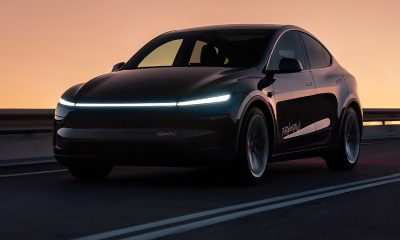
 Elon Musk2 weeks ago
Elon Musk2 weeks agoTesla officially launches Robotaxi service with no driver
-

 Elon Musk1 week ago
Elon Musk1 week agoA Tesla just delivered itself to a customer autonomously, Elon Musk confirms

